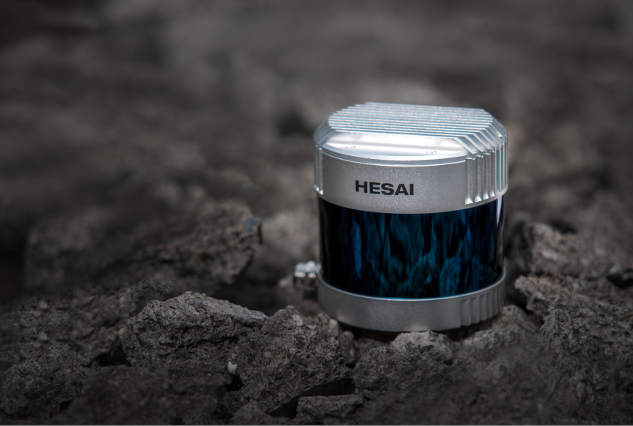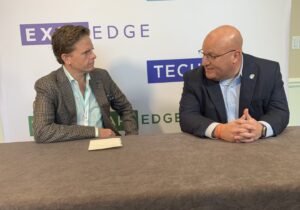
≈
By Exec Edge Editorial Staff
A small safety sensor most people have never heard of has been in the news lately: lidar.
LiDAR stands for light detection and ranging, and these hardware devices come in various shapes and sizes depending on the application. Lidar are one of the most important new safety technologies being integrated into automobiles and industrial robots. They improve the way a vehicle “sees” the surrounding environment. Lidar send out low-frequency light to create a three-dimensional image of the surrounding area. This allows a vehicle’s onboard computer to make better-informed decisions related to steering and braking, especially at night, when smaller objects can be difficult to see.
Today, lidar are mainly used by autonomous vehicles in markets around the world. But they are also being put into new production vehicles in Asia as part of the industry’s latest advanced driver assistance systems (ADAS), designed to help reduce accidents and save lives. One study from earlier this year estimated ADAS systems could prevent as many as 40 percent of all vehicle crashes. Automakers in North America and Europe also have plans to integrate lidar into their vehicles.
As newsworthy as this sounds, lidar’s ability to make roads safer is not the only reason they are drawing attention. Instead, lidar has made headlines because the industry’s technological leader is a Shanghai- and Palo Alto-based company called Hesai Technologies (NASDAQ: HSAI). Despite having the industry’s top-performing lidar products, Hesai has recently been on the receiving end of an attack from a small number of less-successful competitors who have joined forces to lobby in Washington as the Lidar Coalition. Such a message finds a ready audience among China hawks in Congress who are always looking for new ways to punish the Chinese government.
Hesai was established in 2014 in Silicon Valley by three friends who were educated and worked in the U.S. and who wanted to start a company that would develop technology to help save lives. When their visas expired, they were forced to leave the U.S. and grow their new company back home in Shanghai, where they quickly became market leaders due to the quality of their lidar sensors and their understanding of how to manufacture them at scale.
With anti-China sentiment in Washington at an all-time high, U.S. lidar companies and their lobbyists have chosen a strategy to use the political arena to help bring down the market leader and gain a competitive advantage. The House Select Committee on the Chinese Communist Party recently released a report recommending higher tariffs on Chinese imports and severing ties with the Chinese economy. In this toxic environment, all Chinese companies, even publicly traded companies dedicated to safety such as Hesai, are being labeled as threats to U.S. national and economic security.
The facts make clear U.S. competitors’ motivation for their campaign against Hesai. Lidar research firm Yole Intelligence reports that Hesai controlled 47 percent of the global lidar market in 2022. That’s three times larger than its nearest competitor.
That’s translated into financial performance: Hesai’s third-quarter lidar shipments doubled in 2023 and its net revenues hit another high in the quarter, far outpacing its rivals.
Unable to keep pace with Hesai, U.S. players likely saw the anti-China political wave in Washington and jumped on it. Opponents have claimed, without basis, that Hesai can help the Chinese and be used in military applications. Some Congressional offices said that opposition lobbyists have shown them documents suggesting that Hesai’s lidars, owing to the company’s Chinese origins, might constitute a U.S. national security risk.
But the facts are on Hesai’s side. By design, Hesai lidars can neither store nor wirelessly transmit data. They have no cellular, wi-fi or Bluetooth capability. There is no so-called back door on Hesai lidar units. All the 3D images that Hesai lidars generate are passed by secure, one-way cable to a vehicle’s computer, which owns the data. Hesai lidars cannot retrieve the data they generate once they pass it to a vehicle. This has been confirmed by two independent third-party testing agencies that disassembled randomly chosen Hesai lidars.
In addition, the U.S. Department of Commerce’s Bureau of Industry and Security recently granted its EAR99 export control designation to all six Hesai lidar families, certifying they are suitable only for commercial, non-military use.
A popular narrative among China critics is that Chinese companies can undercut their American competitors on price, thanks to heavy government subsidies. Sometimes, that is true. But Hesai has taken no government lidar-sector subsidies of any kind. Until recently, Hesai lidars were priced higher than their U.S. competitors’. Hesai has won market share because its lidars are better, not because they are cheaper.
Another anti-China narrative insists that all Chinese companies are under the government’s control. Again, false. Hesai is publicly traded in the U.S. and is controlled by its three founders. It has taken no government capital investment and has never received interference or direction from Beijing.
It is prudent for the U.S. to guard against threats to national security. But in this case, punishing a company developing new technologies to save lives is against U.S. interests.
The U.S. is suffering an epidemic of traffic deaths, which rose to a 16-year high in 2021. America has the most traffic deaths per capita of any developed country. After decades of steady decline, pedestrian deaths – usually involving vehicles – began climbing in 2010. Pedestrian deaths at night, in particular, have rocketed upward since then, reaching their highest level in more than 30 years.
Unlike cameras on vehicles, lidar units like Hesai’s can see in poor weather and in low or no-light conditions. Lidars see pedestrians stepping onto roadways at night that drivers might not. Within a split-second of the lidar’s detection of the pedestrian, the vehicle’s computer will make the decision to hit the brakes, saving a life.
Hesai is Detroit’s best option for putting high-quality, lifesaving lidars on U.S. roads as soon as possible. No other lidar-maker – even those in America – can produce and ship top-performing lidar units at a pace to match the needs of Detroit’s Big Three automakers.
Hesai’s lidars are good news for road safety in the U.S. But if the U.S. government bans or restricts Hesai, effectively carrying the water for Hesai’s competitors, lives will needlessly be lost on American roads.
Contact:
Exec Edge






